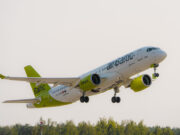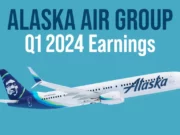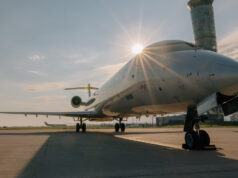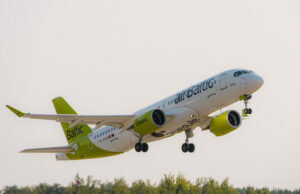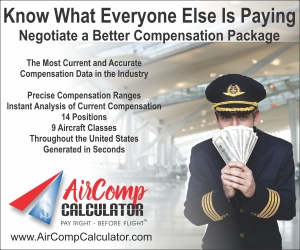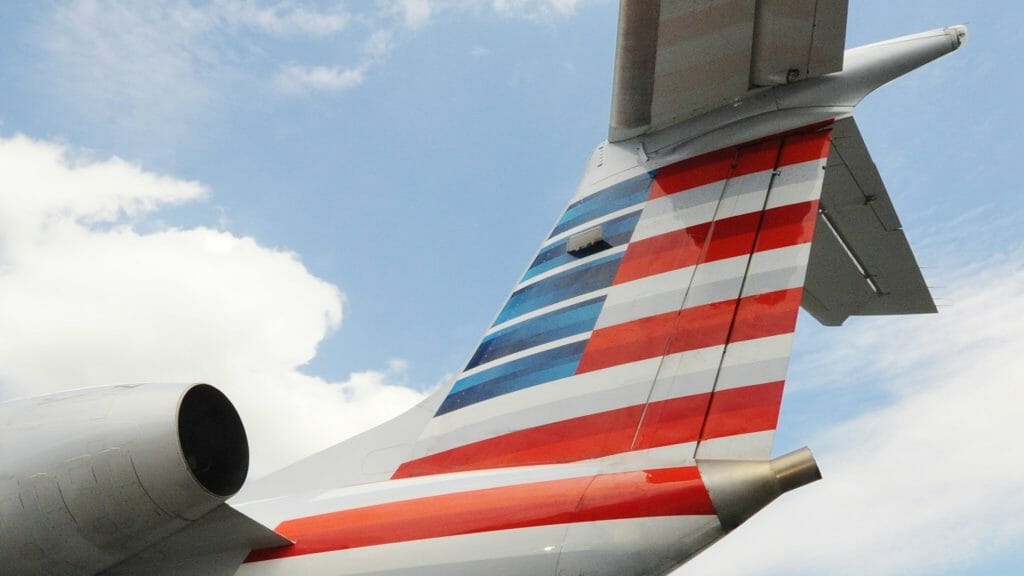
No airline has a better story than Piedmont Airlines. The wholly owned subsidiary of American Airlines traces its roots to 1931 and a 21 year old test pilot who turned a fixed base operator into the country’s first commuter airline and revolutionized the commercial flight industry. Now, 84 years, three name changes and four aircraft types later, Piedmont is undergoing more of an evolution than revolution. For the first time in the company’s history, Piedmont will be operating regional jets. “Dick Henson, the founder of the company now known as Piedmont, would be proud,” said Steve Farrow, Piedmont CEO. “The introduction of the Embraer regional jets not only gives us a bright, stable future, but expands our footprint into new cities and new regions of the country. This is a great time to be on the Piedmont team.”
Piedmont will begin operating the Embraer 145 out of Philadelphia (PHL) in early 2016. In preparation, the airline will open a PHL crew base in January for both the E145 and the de Havilland Dash 8, which Piedmont will continue to operate. The PHL base will grow to include some 250 pilots. “Opening a hub domicile gives us many advantages,” said Farrow. “Not only does it improve the quality of life for our commuting pilots, but it is a great opportunity for new pilots who may not want to move at this point in their lives. A PHL base is really key to this expansion.”
Piedmont took delivery of its first Embraer on October 5 at the company’s headquarters in Salisbury, Maryland. American has committed a minimum of 20 E145 aircraft to Piedmont, with deliveries continuing throughout 2016. But fleet expansion with a new aircraft type isn’t the only great story at Piedmont. Here’s what else is new:
No interview flow to American Airlines
In late 2014, Piedmont signed a unique agreement — now known as “flow” — to provide pilots to American. Each month, Piedmont pilots can “opt in” for flow to American. Once the bid closes, the four (or more) Piedmont pilots with the most seniority are sent to Dallas or Charlotte (or other training center) to begin their mainline careers. Pilots do not have to have a college degree to flow from Piedmont (a requirement for most mainline jobs) or go through an interview process. The new agreement has changed the way Piedmont looks at potential pilots. “Pilots have plenty of options for a first year job at a regional,” said Stephen Keefer, vice president – Flight Operations. “We are looking for pilots who have much bigger career goals in mind, namely pilots who can be successful at a major airlines.”
As part of a small pilot group, Piedmont pilots will flow to American quickly. “Never before could pilots chart a path to a major this fast,” added Keefer. “Start at Piedmont, upgrade in 12 to 18 months, and flow to American in 5 years or less. If you want to apply to another major carrier in the meantime, you certainly can, but you’ll always have the American seat as a backup. You couldn’t plan any better.”
Lyle Hogg joins Piedmont Airlines
Former US Airways vice president Lyle Hogg joined Piedmont as president in June 2015. Captain Hogg was hired as a line pilot by US Airways in 1984, rose through the management ranks and was a key figure in the US Airways-American merger. He brings to Piedmont extensive experience working with the NTSB, FAA and aircraft manufacturers, as well as a unique perspective on hiring and training pilots who want to pursue a career at a legacy airline. Read what Captain Hogg has to say about Piedmont’s future and preparing pilots to flow to American, on page 13.

Piedmont makes commuting easier
A new crew base in Philadelphia will provide better options for pilots who wish to commute, and a new commuter policy eliminates the need for a crash pad in any domicile. Introduced in June 2015, Piedmont’s commuter policy gives pilots four hotel nights per month in base. “It eliminates the expense of a crash pad, and it takes away some of the stress associated with commuting,” said Scott McGuigan, Piedmont chief pilot. “That’s appealing to a lot of people who want to work at Piedmont, but simply can’t move to a base or don’t want to move. Piedmont pilots are actively taking advantage of the program.”
No ATP CTP? No problem.
Piedmont now provides free ATP CTP instruction to pilots who require the ATP written test. Lodging and transportation are included. Pilots who wish to be considered for the ATP CTP class should contact a Piedmont pilot recruiter for more information or email piedmont.recruiting@usairways.com.
Refer your friends, collect $5,000
Great employees attract great employees, and Piedmont recognizes that pilot endorsements are valuable. In May, Piedmont introduced a $5,000 referral bonus to any pilot who recommends another pilot to the company. “Word of mouth is the best advertising we can do,” said Michelle Foose, vice president – Human Resources. “Our pilots know who they want to work with in the cockpit and that knowledge is important to us.” New pilots can refer their friends and family on the very first day of training, and the number of referrals is unlimited. “We have a pilot who is on track to collect $25,000 for referring five friends,” said Foose. “We see very good pilots coming through the door, so it’s working.” American also offers a $1,000 recruiting bonus to its employees for referring a pilot to Piedmont. Details can be found on the American employee website, Jetnet.
See your future at American Airlines
Qualified pilots are now flown to Charlotte to interview with Piedmont at the American training center. Prospective pilots get the chance to see where they will spend time during ground school and simulator training if hired. “We tell them to look around and notice how the Piedmont classrooms are next to American classrooms,” said Matt Berson, Piedmont pilot and pilot recruiter. “Our simulator is next to the American simulators. We point out that when they flow, they will come right back here for training. They immediately recognize the unique opportunity before them.”
EFBs for pilots in 2016
Piedmont will introduce Electronic Flight Bags (EFBs) for pilots in 2016, part of an overall update to the iPad program across American Airlines. Piedmont pilots will receive an iPad along with a 750MB domestic data plan. “This is an exciting announcement that goes hand in hand with the introduction of the Embraer 145,” said Lyle Hogg. “We are now working to fine tune the Piedmont EFB program with the goal of having an iPad in the hands of every pilot by mid-2016. American will purchase new iPads for mainline and regional pilots, allowing all pilots to participate in the same EFB program.
Not new, but notable
Piedmont is currently running 12 to 18 months to upgrade; previous 121 time is an advantage.
Piedmont was the first regional training department to be fully certified by the FAA with an Advanced Qualification Program.
Piedmont training is conducted at the American training center in Charlotte. Pilots are given single room occupancy during training, as well as pay and per diem.
Piedmont pilots enjoy excellent family travel benefits on American; the same benefits as American pilots.
Piedmont offers quality health insurance at a reasonable price. Currently, pilots pay less than $100 per month for individual coverage and less than $250 per month for family coverage.
Piedmont offers free life and disability insurance
Piedmont offers a 401(k) with company match
Piedmont pilots receive 100 percent trip cancellation pay and 150 percent + premium pay for added flying.
Piedmont offers a $5,000 signing bonus.

An interview with Piedmont president, Lyle Hogg
Former US Airways vice president, now Piedmont Airlines president, Lyle Hogg talks about growth at the company, the addition of Embraer jets and how flow is changing pilot hiring.
You were involved in pilot hiring for US Airways for many years. What is different now?
For years, pilots had to take the first job that came along and you would progress in your career somewhat by the luck of the draw. Now, young aviators have a lot of choices. Not only that, they are in an unprecedented situation where they can choose the world’s largest airline, American, simply by applying to Piedmont. Industry consolidation has left us with three robust network airlines that will be around for a long time. Sewing up a job with American Airlines through Piedmont provides our pilots and their families a great future.
When you say pilots can choose American by applying to Piedmont, you are talking about a flow agreement, correct? How does flow affect hiring?
Correct. The way these agreements are structured, American will get most of its pilots from the wholly owned carriers, including Piedmont. The next biggest group hired by American will be pilots with military experience. Considering that our parent company has more than 14,000 resumes on file for 500 pilot positions, and most of those positions will be filled by regional pilots, there will be a limited number “off the street” new hire pilots at American in the foreseeable future.
What advice would you give to a new pilot who just starting to map out his or her career?
There are only a handful of major airlines remaining that give you the option of flying a high paying, wide body aircraft later in your career. There are opportunities with freight carriers, but really, the pinnacle of our industry is going to work for one of the three network carriers. Coming to Piedmont gives you the assurance of knowing that you will have a job at one of those three network carriers. That’s not to say you can’t apply to the other two, but here you have American flow. Further, American has 11 crew domiciles, so there’s a tremendous choice of places to live as you progress through your career.
How is Piedmont pilot hiring different from what is happening at other regional carriers?
Piedmont is in a unique position because we are hiring not only to replace the pilots who will head to American Airlines, but hiring for growth. Further, our growth in proportion to our size is greater than any other carrier in the regional industry right now. So, when you consider that we are adding about 200 new pilots in the next 18 months to cover our expansion, and adding pilots to replace the pilots who flow to American, we are talking about 260 to 280 aviators. That’s more hiring in proportion to size than any regional carrier will have in the industry.

How is that growth being managed?
We can manage the growth because it is very steady. We will be receiving one regional jet per month, and we will flow four pilots per month. It’s not explosive. We don’t want to expand too quickly as that can cause problems in training and other areas.
How do you see Piedmont fitting into the American network in the future?
We have been pledged a minimum of 20 Embraer 145 aircraft, which is about a 50 percent growth rate on our current fleet. That said, in order to be a strong part of the American network, we really need to grow more than this first 20 aircraft. There’s no reason why we can’t have a growth rate of 100 percent and expand our contribution to American. No other regional carrier has anywhere near a plan for 100 percent growth rate in coming years. As a result of that, our pilots, for quite some time, are going to enjoy rapid progression from the right seat to the left seat.
After American announced that the Embraer 145 would be flying out of Philadelphia, Piedmont realigned its crew bases. Why?
With the announcement that our new aircraft will be flown primarily in and out of Philadelphia, we recognized a need to open a domicile there. We also heard from our pilot group that they desired a better commuting opportunity for the Dash 8, therefore, we decided to open up a domicile in Philadelphia for the Dash 8 as well. It’s just another way to make life a little easier for pilots who choose to commute to work.
Also looking forward, as our Dash 8 fleet begins to retire, we would need to make adjustments to our domiciles anyway. Adding 250 pilots to PHL meant eventually closing our smallest crew bases in New Bern and Charlottesville, so we made the decision to realign all the bases at one time at the beginning of 2016. At the end of the transition, we’ll have bases in Philadelphia (PHL), Salisbury-Ocean City, Md. (SBY), and Harrisburg, Pa. (MDT) so 75 percent of our pilots will be within two hours of a hub. The rest of our pilots are based in Roanoke, Va. (ROA), which is a very desirable location for a crew base.
Piedmont has been flying the de Havilland Dash 8 for more than 30 years. What happens to the turboprops now that jets are arriving?
We will begin to retire some Dash 8 aircraft in 2017, but 25 of them will continue to fly beyond 2020. They really serve an important niche in the American Airlines network.
Some say that “jet time” is more important than “prop time” when it comes to building a career, but you disagree. Why?
There are very few carriers in the country that perform turboprop flying, and yet flying the Dash 8 is some of the most challenging and enjoyable flying that our pilots will ever do. It is a fantastic learning situation for young pilots. As you fly larger and larger aircraft, you tend to only fly ILS approaches to 10,000-foot runways. The Dash is challenging because it goes into small airports not always served by ILS approaches. It requires you to have situational awareness at all times to be able to maneuver the aircraft in and out of these locations. It really gives you the skills you need to be a good pilot no matter what you fly later in your career. On a different note, it’s really fun and it’s eventually going away. I hope pilots will take advantage of a type of flying that won’t be around forever.
Piedmont Fast Facts:
Captains: 200
First officers: 219
Upgrade time: 12 to 18 months; previous 121 time is an advantage
Crew bases (2016): Philadelphia (PHL), Roanoke, Va. (ROA), Salisbury-Ocean City, Md. (SBY), Harrisburg, Pa. (MDT)
Advanced Qualification Program (AQP): Yes
Aircraft:
11 de Havilland Dash 8/300
26 de Havilland Dash 8/100
20 Embraer 145 (Deliveries beginning October 2015)
Daily Departures: 280
Airports served: 50
Flow to American Airlines: Yes, no interview required
Website: piedmont-airlines.com
Social media: Facebook: Work for Piedmont
Twitter: Work for Piedmont
Linked In: Piedmont-Airlines
Contact a recruiter: piedmontrecruiting@usairways.com
Apply online: AirlineApps.com
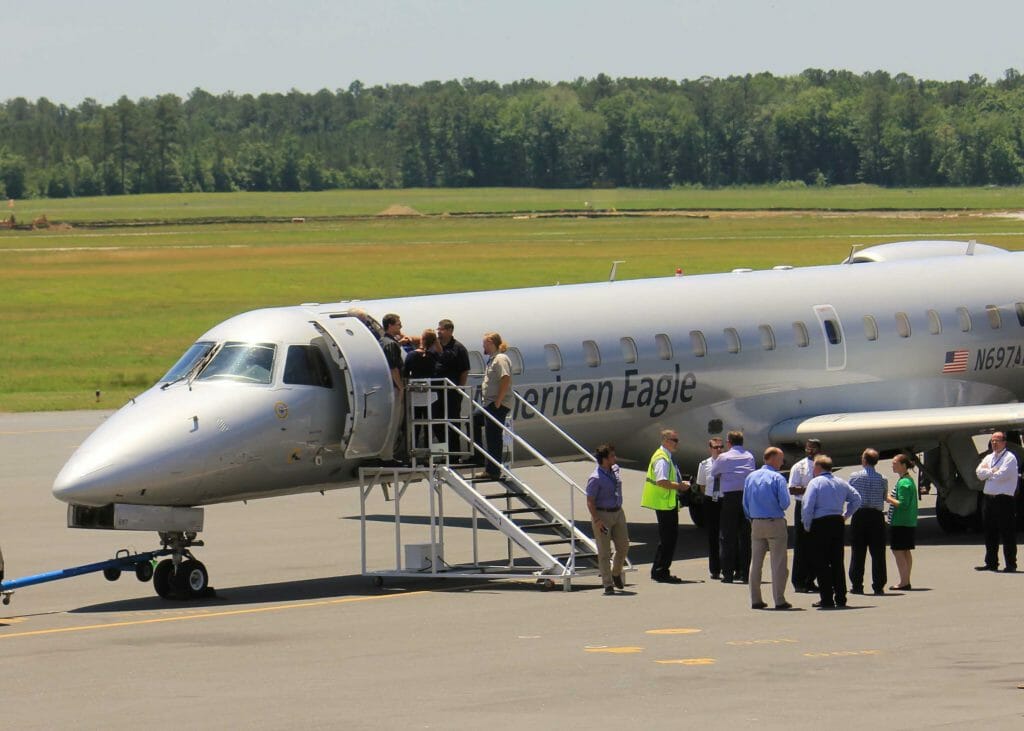
Interview with Matt Berson,
Piedmont line pilot and pilot recruiter.
Craig: How do you select applicants to be brought in for an interview?
Matt: We look at the applicant’s overall qualifications from flight time to employment history. Once we have identified the candidate as someone we’d like to talk to, we call him or her for a brief phone screening.
C: What can an applicant do to increase their chances of being called for an interview?
M: We like to see some indication on the resume that he or she a strong instrument pilot. Also, being referred by a current employee who can testify to the applicant’s professionalism and abilities as a pilot, is a plus.
C: How critical is it to attend a job fair to get an interview?
M: It isn’t, but we often will have at least one representative in attendance to answer questions.
C: What is the best way to prepare for an interview with your company?
M: Be instrument current, study ATP written test questions and RELAX.
Interview:
C: Do you recommend that applicants get to your headquarters city the day before and get a hotel room for the night?
M: We conduct most of our interviews at the American Airlines training center in Charlotte. We will fly an applicant to the training center the morning of the interview and fly them home that evening.
C: Can you walk me through a typical day of interviews?
M: We begin with a company presentation – a little history and a look at how we’re growing to bring on the (Embraer 145) regional jets. We then provide lunch while we go over their paperwork and set up for the written test. At that point we transition to a 25 question, ATP-style written test and then the one-on-one technical and HR portion to wrap up the day.
C: What kind of questions can an applicant expect to be asked?
M: We cannot stress enough the importance of being instrument current and competent. Expect a number of questions involving instrument procedures; holding, briefing an approach, etc. The written test was developed around the FAA ATP written exam.
C: Can you give me some examples of the TMAAT questions that you like to ask?
M: These questions are usually pulled from something in the interviewee’s experience. For example, if a pilot has 121 time we often ask about a time he/she had a conflict with another crew member and how they handled it.
C: What are some of the biggest mistakes that applicants make during the interview process?
M: Not being instrument proficient and not being prepared for a basic ATP style written test.
Written test:
C: Is there a written or computer test?
M: Written.
C: What can you recommend applicants study for that test? At what point is this test taken?
M: Sheppard Air airline prep ATP software.
Simulator Evaluation:
C: Do you have a simulator ride?
M: Not currently.
Post Interview:
C: Do you tell applicants they are hired in person that day?
M: Usually, unless we require approval from the Chief Pilot’s office.
C: If not, how long do applicants have to wait to know if they are hired?
M: Usually within 48 hours.
C: How soon can an applicant expect a class date after being hired?
M: Typically within a month.
General:
C: How many pilots does your airline expect to hire this year?
M: 300
C: Is there an ATP-CQP class that your company offers?
M: We are waiting on final FAA approval for our in-house program, so we send ATP-CTP (at our expense) to a course at CAE.
C: Do you have a hiring bonus? Is there any specific criterion to qualify for the bonus?
M: We have a new hire bonus of $5,000. $3,000 is paid at the completion of Initial Operating Experience and the remaining $2,000 is paid at the pilot’s one year anniversary.
C: Does Piedmont have a pilot referral program?
M: We do. We pay $5,000 to any Piedmont Airlines employee – including pilots in training – who refers a pilot to us. We do one payout after training, and the rest after the pilot completes six months on the line. American Airlines employees can also refer pilots to Piedmont and collect a $1,000 referral bonus.
C: Can you describe the career path program that Piedmont has with American Airlines?
M: We have a no interview, pure flow through with American Airlines that increases as our pilot group expands.












